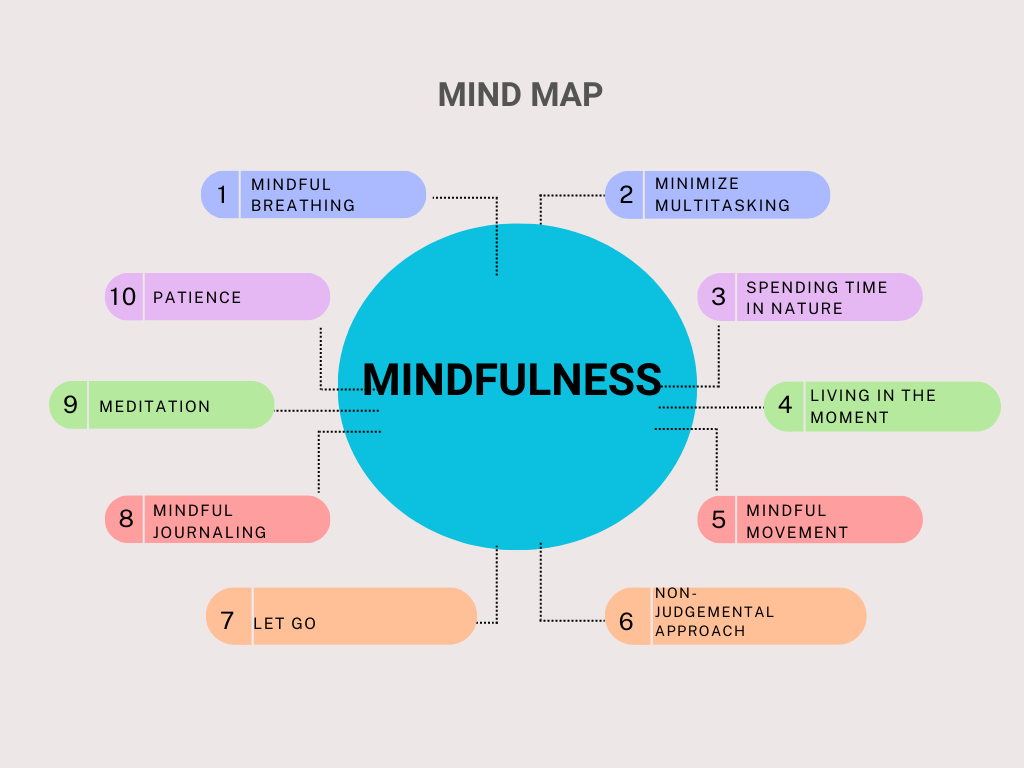Mindfulness and Meditation: Simple Practices for Reducing Stress
In today’s fast-paced world, stress has become an almost inevitable part of life. However, practicing mindfulness and meditation can be powerful tools to help manage and reduce stress. These practices encourage living in the moment, improving mental clarity, and fostering a sense of peace. Here’s a guide to simple mindfulness and meditation practices that can help you reduce stress and improve your overall well-being.
1. What is Mindfulness?
Mindfulness is the practice of being fully present and engaged in the current moment, without judgment. It involves paying close attention to your thoughts, feelings, and surroundings, which helps you become more aware of your habitual reactions to stress.
Benefits of Mindfulness:
- Reduces stress and anxiety
- Improves focus and concentration
- Enhances emotional regulation
- Promotes overall mental well-being
2. Starting a Mindfulness Practice
Mindfulness can be practiced at any time, whether you’re at work, at home, or on the go. Here are some simple ways to incorporate mindfulness into your daily routine:
Mindful Breathing:
- How to Do It: Sit comfortably and close your eyes. Focus on your breath, noticing each inhale and exhale. If your mind starts to wander, gently bring your attention back to your breathing.
- When to Practice: Try this for a few minutes each morning to set a calm tone for the day, or anytime you feel stressed.
Mindful Eating:
- How to Do It: Pay full attention to the experience of eating. Notice the texture, taste, and aroma of your food. Eat slowly and savor each bite.
- When to Practice: During meals, especially when you’re eating alone, to help you stay present and enjoy your food more fully.
Body Scan Meditation:
- How to Do It: Lie down or sit comfortably. Close your eyes and bring your attention to each part of your body, starting from your toes and moving up to your head. Notice any tension or sensations without trying to change anything.
- When to Practice: Before bed to help relax your body and mind for a restful sleep.
3. Introduction to Meditation
Meditation is a practice that involves focusing your mind on a particular object, thought, or activity to train attention and awareness, ultimately achieving a mentally clear and emotionally calm state.
Benefits of Meditation:
- Reduces stress and promotes relaxation
- Improves emotional health and self-awareness
- Enhances attention span and mental clarity
- Can reduce symptoms of anxiety and depression
4. Simple Meditation Practices for Beginners
Starting a meditation practice doesn’t require a lot of time or special equipment. Here are a few simple techniques to get you started:
Guided Meditation:
- How to Do It: Use a meditation app or online video to guide you through a meditation session. These sessions typically involve focusing on your breath, relaxing your body, and visualizing calming scenes.
- When to Practice: Set aside 5-10 minutes each day, either in the morning or before bed, for a guided meditation session.
Loving-Kindness Meditation:
- How to Do It: Sit comfortably and close your eyes. Begin by focusing on your breath, then shift your focus to sending thoughts of love and kindness to yourself. Gradually extend these feelings to loved ones, acquaintances, and even people you have difficulty with.
- When to Practice: Practice loving-kindness meditation when you feel stressed, or whenever you want to cultivate more compassion and empathy.
Mindful Walking Meditation:
- How to Do It: Take a slow, deliberate walk in a quiet place. Focus on the sensations of walking, such as the feeling of your feet touching the ground and the movement of your body. Pay attention to your surroundings, noticing sights, sounds, and smells.
- When to Practice: Use walking meditation as a break during your day, especially if you spend a lot of time sitting.
5. Incorporating Mindfulness and Meditation into Daily Life
Mindfulness and meditation don’t require you to set aside large blocks of time. Here are some tips to seamlessly integrate these practices into your daily routine:
Start Small: Begin with just a few minutes a day and gradually increase the duration as you become more comfortable with the practice.
Create a Routine: Set a specific time each day for mindfulness or meditation, such as first thing in the morning or just before bed.
Use Reminders: Place visual reminders, like sticky notes or phone alarms, to prompt you to pause and practice mindfulness throughout the day.
Be Patient: Building a mindfulness and meditation practice takes time. Don’t get discouraged if you find it difficult to focus at first—consistency is key.
Conclusion
Incorporating mindfulness and meditation into your life can be a transformative way to manage stress and enhance your overall well-being. By taking the time to be present, breathe deeply, and focus on the moment, you can cultivate a sense of calm and clarity that permeates all areas of your life.
Start small, stay consistent, and enjoy the journey toward a more mindful and stress-free life.













